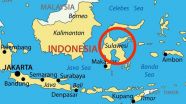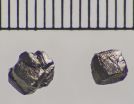(Press-News.org) PRINCETON, N.J.--A team led by researchers from Princeton University, Michigan State University and the Indonesian Institute of Sciences have confirmed the discovery of a new bird species more than 15 years after the elusive animal was first seen on the Indonesian island of Sulawesi.
The newly named Sulawesi streaked flycatcher (Muscicapa sodhii), distinguished by its mottled throat and short wings, was found in the forested lowlands of Sulawesi where it had last been observed. The researchers report in PLOS ONE that the new species is markedly different from other flycatchers in its plumage (feathers), body structure, song and genetics, proving that it is a new species. Because the bird has survived in a region heavily degraded by cacao plantations, the species is not currently at risk of extinction.
"Considering that 98 percent of the world's birds have been described, finding a new species is quite rare," said co-author J. Berton C. Harris, a postdoctoral fellow at Princeton's Program in Science, Technology and Environmental Policy, which is based at Princeton's Woodrow Wilson School of Public and International Affairs. "And despite being a globally important avian hotspot, Sulawesi has largely gone unstudied by ornithologists."
The new species found by Harris and his collaborators has awaited formal scientific description since 1997, when the bird was originally spotted in a patchy remnant of forest. At the time, the Sulawesi birds were thought to be migratory gray-streaked flycatchers (Muscicapa griseisticta).
With funding from the National Geographic Society, Harris and some of his collaborators traveled to Central Sulawesi in the summers of 2011 and 2012 to continue the search for the mysterious animal. After weeks of camping near the town of Baku Bakulu, the researchers finally found the bird -- in the place it was originally seen -- in summer 2012, observing several of them.
A full examination of the bird's measurements, genetics, plumage and sound revealed that, compared with similar flycatchers, the bird has shorter wings, a more strongly hooked bill and a shorter tail. Its plumage also is distinct, as the bird has a plainer face and streaked throat. The new species' DNA shows that it is only distantly related to the gray-streaked flycatcher, and it most closely resembles the Thailand population of the Asian brown flycatcher (M. dauurica siamensis).
In its song, the new bird is rather similar to other Asian species, producing whistles, chirps and trills, but is slightly more high-pitched and lacks the lower-pitched notes that other species make. Co-author Pam Rasmussen of Michigan State University, who runs the global bird sounds website AVoCet where the bird's song is archived, said, "We were lucky to be able to make the first known recording of this bird singing."
While the new species does not require pristine rainforest to survive, it does appear to be dependent on tall forest trees spared by farmers. "At this point, the species is not at risk for extinction. However, this could change if agriculture intensifies in this region," said Rasmussen.
Princeton Professor David Wilcove, who is Harris' adviser and was not part of the study, said this research shows why studying biodiversity is so important.
"The discovery of this previously unknown bird demonstrates once again how much we have yet to learn about the biodiversity of this planet and, especially, the biodiversity of the tropics," said Wilcove, professor of ecology and evolutionary biology and public affairs at the Wilson School. "Birds may well be the most intensively studied class of vertebrates on Earth -- with millions of birdwatchers looking for them -- yet scientists are still discovering new species."
The Latin name the team gave the bird pays homage to the late ecologist and ornithologist Navjot Sodhi, who was Harris' former mentor and a professor at the National University of Singapore. Several animal species have been named after Sodhi, including a snail, a fish and a new genus and species of crab.
"The naming of so many species in honor of Sodhi shows how important he was to his students and collaborators," Harris said. "He probably would have been particularly pleased with our bird description, though, because he was an ornithologist, and so few bird species remain to be described."
INFORMATION:
The paper, "A new species of Muscicapa flycatcher from Sulawesi, Indonesia," was published online Nov. 24 by PLOS ONE. It can be found here: http://dx.plos.org/10.1371/journal.pone.0112657
Co-authors include Ding Li Yong from the Australian National University and Southeast Asian Biodiversity Society, Dewi M. Prawiradilaga from the Research Center for Biology-LIPI, Dadang Dwi Putra from the Celebes Bird Club in Indonesia, Philip D. Round from Mahidol University in Bangkok and Frank E. Rheindt from the National University of Singapore.
The project was funded by the National Geographic Society (NGS CRE 8919-11), the Loke Wan Tho Memorial Foundation and an EIPR scholarship at the University of Adelaide. Lab work for the project was co-funded by a start-up grant from the National University of Singapore Faculty of Science. The Research Center for Biology-LIPI supported the field research and provided facilities for laboratory analysis.
November 24, 2014 - Differences in breast size have a significant mental health impact in adolescent girls, affecting self-esteem, emotional well-being, and social functioning, reports the December issue of Plastic and Reconstructive Surgery®, the official medical journal of the American Society of Plastic Surgeons (ASPS).
More than just a "cosmetic issue," breast asymmetry can have negative psychological and emotional effects, according to the study by ASPS Member Surgeon Dr. Brian I. Labow and colleagues of Boston Children's Hospital. They suggest that early intervention ...
November 24, 2014 - For women considering breast reduction surgery, initial evaluation at a shared medical appointment (SMA) provides excellent patient satisfaction in a more efficient clinic visit, reports a study in the December issue of Plastic and Reconstructive Surgery®, the official medical journal of the American Society of Plastic Surgeons (ASPS).
Shared medical appointments have additional benefits, including "group learning, peer support, and a sense of solidarity and commonality" among women learning about breast reduction surgery, according to the study ...
Climate change could lengthen the growing season, make soil drier and decrease winter snowpack in the Lake Michigan Basin by the turn of the century, among other hydrological effects.
A new U.S. Geological Survey precipitation and runoff model shows that by 2100, maximum daily temperature in the Lake Michigan Basin could increase by as much as seven degrees Fahrenheit, and the minimum daily temperature by as much as eight degrees. A new USGS report published today summarizes the potential hydrological effects of these increases on the basin through 2099. The tools can ...
Lincoln, Neb., Nov. 24, 2104 -- The improvements in random access memory that have driven many advances of the digital age owe much to the innovative application of physics and chemistry at the atomic scale.
Accordingly, a team led by University of Nebraska-Lincoln researchers has employed a Nobel Prize-winning material and common household chemical to enhance the properties of a component primed for the next generation of high-speed, high-capacity RAM.
The team, which published its findings in the Nov. 24 edition of the journal Nature Communications, engineered and tested ...
Parents who spend their time playing with and talking to their five-month-old baby may wonder whether their child remembers any of it a day later.
Thanks to a new BYU study, we now know that they at least remember the good times.
The study, published in Infant Behavior and Development, shows that babies are more likely to remember something if there is a positive emotion, or affect, that accompanies it.
"People study memory in infants, they study discrimination in emotional affect, but we are the first ones to study how these emotions influence memory," said BYU psychology ...
Honeybee populations are clearly under stress--from the parasitic Varroa mite, insecticides, and a host of other factors--but it's been difficult to pinpoint any one of them as the root cause of devastating and unprecedented losses in honeybee hives. Researchers writing in the Cell Press journal Trends in Parasitology on November 24th say that the problem likely stems from a complex and poorly understood interplay of stresses and their impact on bee immunity and health. It's a situation they suspect might be improved through stress management and better honeybee nutrition.
As ...
MINNEAPOLIS, MN - November 24, 2014 - Nearly all individuals in their late 60s and early 70s -- including 100 percent of men -- now qualify for and should consider starting a statin medication to reduce their risk of cardiovascular disease, under the recently released cholesterol guidelines from the American College of Cardiology (ACC) and the American Heart Association (AHA).
That's according to a research letter published today in the 11/20/2014 (JAMA-IM) by Michael D. Miedema, MD, MPH, a research cardiologist at Minneapolis Heart Institute Foundation and cardiologist ...
The immune system is designed to remove things not normally found in the body. Cells undergoing change, e.g. precursors of cancer cells, are therefore normally recognised and removed by the immune system. Unfortunately, the different cancer cells contain mechanisms that block the immune system's ability to recognise them, allowing them to freely continue cancer development.
Certain cancer cells overexpress immunostimulatory molecules in liquid form. Such over-stimulation has a negative impact on the immune system:
"You can say that the stimulating molecules over-activate ...
The degree to which parents sacrifice themselves for their children depends on a variety of factors. On the one hand nest predators pose a threat to the young and the parent birds. But also the time of hatching plays a role. Earlier studies have shown that birds born late in the season are more likely to be protected by their parents, as the adult birds often do not have the chance to produce replacement clutches. Older offspring also tend to be protected more readily than younger ones, as much more parental care and energy have already been invested.
"Studies on the ...
Scientists have argued for half a century about the existence of a form of diamond called lonsdaleite, which is associated with impacts by meteorites and asteroids. A group of scientists based mostly at Arizona State University now show that what has been called lonsdaleite is in fact a structurally disordered form of ordinary diamond.
The scientists' report is published in Nature Communications, Nov. 20, by Péter Németh, a former ASU visiting researcher (now with the Research Centre of Natural Sciences of the Hungarian Academy of Sciences), together with ASU's ...



